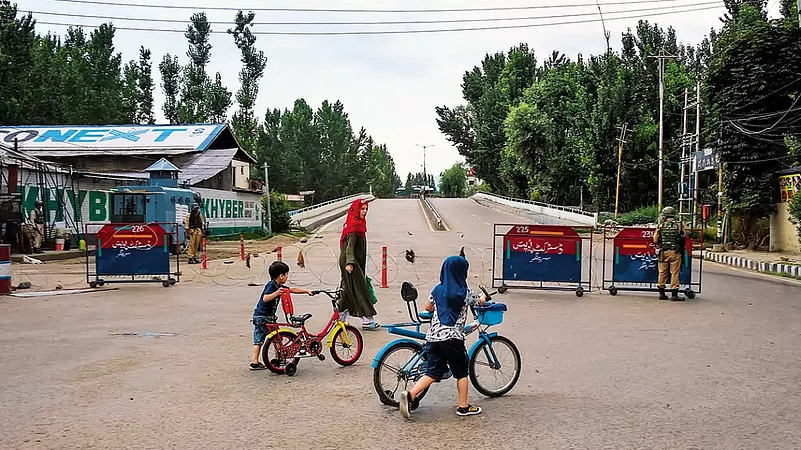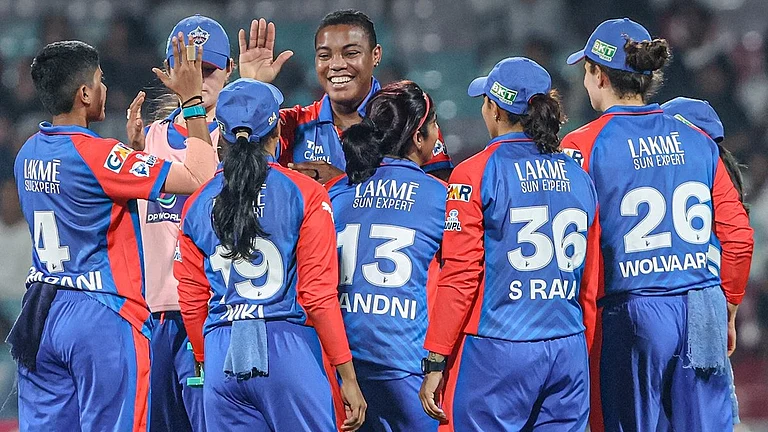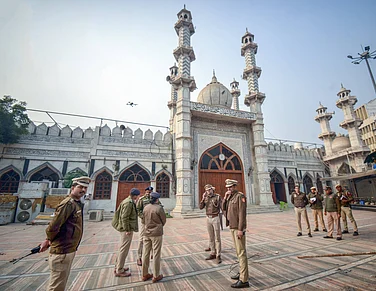Four years after the unilateral abrogation of Kashmir’s semi-autonomous status, the Supreme Court of India eventually endorsed the Central government’s contentious decision on December 11, 2023. The judgement exemplifies the Supreme Court’s fragmented track record of disengagement with J&K’s unique constitutional position.
For the uninitiated, J&K stands as the only state that actively bargained the terms of its membership with the Indian Union. This exceptional constitutional arrangement reserved J&K’s legislative authority on all matters except defence, external affairs, and communication, which was later codified in Article 370 of the Indian Constitution. Hence, J&K retained a unique and distinct status in the post-colonial Indian landscape, acceding but not merging like other states. Article 370 also recognised the state’s autonomy to frame its Constitution. The December 11 judgement bypassed the Constitution and its precedents. More than the outcome of the ruling, the conspicuous absence of constitutional reasoning in the judgement is baffling. A closer reading of the judgement highlights that the court has complicated a legally easy issue.
Contrary to the time-honoured understanding, the court held no qualms about obliterating bilateralism in the text and context of Article 370. The court has virtually decimated the ‘will of the people of J&K’ by ruling that Article 370 could have been abrogated without ‘concurrence’ from J&K’s ‘Constituent Assembly’—a prerequisite under the Article. Surprisingly, the presidential order of 2019 at least attempted a facade of bilateralism—changing the reference of ‘Constituent Assembly’ to ‘Legislative Assembly’ in Article 367. Interesting to note here, J&K’s Constituent Assembly was a result of adult-franchise-based elections, unlike the Indian Constituent Assembly. Symbolising a transition of the ‘residual sovereignty’ of J&K from the Maharaja to the people, the state Constitution was drafted. A fact also confirmed by the report of the Basic Principles Committee of the State’s Constituent Assembly. The Committee observed: ‘The sovereignty of the State resides in the people thereof and shall, except regarding matters specifically entrusted to the Union, be exercised on their behalf by the various organs of the State’.
Yet, the court refused to accept that J&K retained ‘internal sovereignty’, arguing that J&K had surrendered full sovereignty after a Proclamation was issued by Yuvraj Karan Singh in November 1949. The court’s invocation of the proclamation is self-defeating for two reasons. First, it was meant to oversee the state’s transition from the applicability of the Government of India Act, 1935, to the Constitution of India. Second, such a proclamation cannot be invoked to overshadow the constituent power of J&K’s Constituent Assembly that shaped the relationship between J&K and the Indian Union.
At the time of hearings in the case, I have argued elsewhere that the SC had erred in not referring the Article 370 case to a seven-judge Constitution Bench as there were two conflicting decisions by five-judge Constitution Benches in Prem Nath Kaul v State of J&K (1959) and Sampat Prakash v State of J&K (1968). Relying on an interpretation of the bare text of the Constitution, Prem Nath did two things: It emphasised the ratification by the J&K’s Constituent Assembly to extend any provision of the Indian Constitution to the state. It established that J&K has retained internal sovereignty while giving away external sovereignty.
Instead of following the precedent in Prem Nath, the Court has deliberately chosen to diminish its import in subsequent cases. In Sampat Prakash, a narrowing down of the constitutional precedent was on full display. Extrapolating the silences of Article 370, the court vastly expanded the President’s authority to modify the provisions of the Indian Constitution for J&K, potentially risking abuse. In effect, the court’s interpretation of ‘modification’ in Article 370(1) essentially permitted radical amendments subsequently, relegating it to a procedure for abusive constitutional alteration rather than safeguarding J&K’s autonomy. The court further stated: ‘Article 370(2) only refers to the concurrence given by the Government of the State before the Constituent Assembly was convened and makes no mention at all of the completion of the work of the Constituent Assembly or its dissolution’. Notably, all the SC orders since Sampat Prakash appear to have sanctioned executive actions, even after the dissolution of J&K’s Constituent Assembly—the sole body authorised to endorse presidential orders. The contradiction, highlighted by the two cases, was, however, dismissed by the SC in the initial hearings in the Article 370 case. Now that the final verdict is out, the refusal to consider Prem Nath speaks for itself, amounting to a stealth narrowing of constitutional precedent.
Contrary to the mounting evidence, the Court has given a weak explanation for calling Article 370 temporary. Centralising the word ‘temporary’ in the Article’s marginal note and the political conditions at its conception, the Court has altered its stance on the Article’s permanence time and again. Paradoxically, in Sampat Prakash, the Supreme Court indicated the permanence of Article 370 by interpreting it to widen the presidential power to modify the provisions of the Indian Constitution applicable to J&K. Not long ago, the Court reiterated the permanent nature of the Article in State Bank of India v Santosh Gupta (2016).
It is noteworthy that the word ‘temporary’ was put in the marginal note because the final form of the constitutional relationship between J&K and the Indian Union was to be decided by the Constituent Assembly of the state. Since the Constituent Assembly of the state had not been convened yet, and its recommendations were awaited, Article 370 was initially meant to be temporary when the Indian Constitution was enforced on January 26, 1950. However, later, on January 26, 1957, the Constituent Assembly was dissolved without making any recommendation on the abrogation of the Article.
Apart from the substantive questions of constitutional erosion in J&K, the judgement raises a host of other crucial questions in the context of stripping J&K of the statehood in August of 2019. Effectively giving the executive a free rein to do anything, including the exercise of non-law-making powers of a state legislature under Article 356, the judgement is a rewriting of ADM Jabalpur v Shivkant Shukla (1976)—a verdict that has infamously endorsed the emergency of 1970s. Both the abrogation of Article 370 and J&K’s reorganisation have been validated by the Court, stating that in the absence of the state legislature, the Parliament can express ‘views’.
This constitutes a blatant misreading of the President’s power under Article 356. According to constitutional principle, the President can merely exercise ‘powers’ under the Article; the said power does not, by any stretch of imagination, extend to the expression of ‘views’ on behalf of a state legislature. Yet, the Court held: ‘Once the Presidential proclamation has been approved by both Houses of Parliament, so as to reflect the will of the people, the President has the power under Article 356 to make irreversible changes, including the dissolution of the State Assembly’. This doesn’t even fit into the Court’s rhetorical reference to J&K as reflecting ‘asymmetrical federalism’ within the Indian Union. Worse still, the Court has abdicated its responsibility by not agreeing to scrutinise the degradation of J&K into two Union Territories, whereas in the same breath validating the creation of the Union Territory of Ladakh!
The upshot is that the Court’s interpretivism, though employed inconsistently, has shown a troubling disregard for the Constitution and its own precedents. With a history of patchy engagement with J&K’s unique constitutional position, the Article 370 ruling makes a perfect case of constitutional subterfuge in India’s post-colonial constitutional history.
(Views expressed are personal )
Burhan Majid is an assistant professor of law at the school of Law, Jamia Hamdard, New Delhi
(This appeared in the print as 'A Constitutional Backsliding?')
























